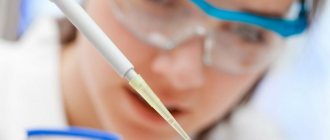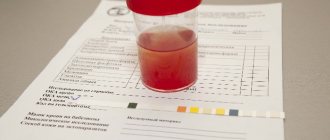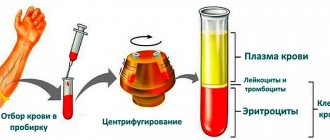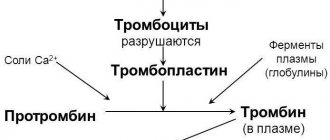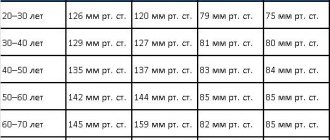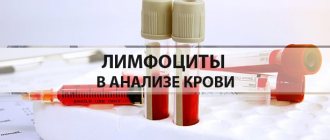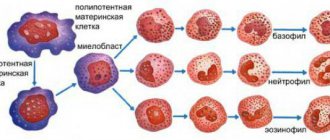Leukocytes in the blood of women: normal indicators
The natural rate of leukocytes in the blood of women and men is different, as indicated by some factors characteristic only of the weaker sex (pregnancy, lactation, menstruation).
Leukocytes are white cells in the blood that provide protection to the body from the environment. Their increase indicates the occurrence of inflammatory processes and various pathologies in the body, therefore the normal level of leukocytes in women is in a certain range, deviations from which indicate the need for more accurate diagnosis.
The role of leukocytes in the blood
White blood cells have an important mission for the human body - they protect it from viral and bacterial attacks, waste and toxins, and other foreign bodies. The leukocyte series consists of several types, each of which plays its own role:
- Neutrophils - detect bacterial infections and destroy them.
- Lymphocytes are responsible for the immune system and the so-called immune memory.
- Monocytes - destroy foreign elements found in the blood.
- Eosinophils are responsible for human allergic reactions.
- Basophils - play a supporting role in detecting foreign particles and are important in inflammatory and allergic reactions.
The main tasks of leukocytes include:
- Penetration into the gastrointestinal tract in order to capture nutrients and transport them into the blood. This is especially important for infants, who receive immune protection from their mother through breast milk.
- Taking part in building humoral and cellular immunity, i.e. performing a protective function.
- Dissolution of damaged tissues.
Indications for the study
A general blood test with the determination of leukocytes, and, according to indications, the leukocyte formula, is prescribed to patients undergoing a preventive medical examination, seeking outpatient medical care or admitted to a hospital. Indications for determining the concentration of leukocytes and their forms are:
- infectious diseases;
- inflammatory process of any localization;
- suspicion of helminthiasis or parasitic infestation;
- malignant processes;
- allergic reactions;
- assessment of the effectiveness of anti-inflammatory treatment;
- suspicion/presence of leukemia.
White blood cell counts can detect hidden infections and hidden undiagnosed conditions, such as autoimmune diseases, immunodeficiencies, and blood disorders.
Standard indicators: general information
The normal white blood cell count may vary from person to person. Moreover, the main criterion for difference is the age of the subject. So, in children this figure will be higher than in adults. Due to the fact that the norm is estimated in units per liter of blood, diet, body condition and time of day should also be taken into account. So, in the afternoon, after eating, after any stress, physical or mental, the concentration of the indicator will be increased. Gender has virtually no effect on the number of leukocytes. The amendment needs to be made only for a pregnant woman and a woman after 50 years, when due to hormonal changes the concentration of the indicator changes.
For a healthy person, the leukocyte composition of the blood looks like this:
- 55% – neutrophils: 45-72% – segmented neutrophils, 1-6% – band neutrophils;
- 19-37% – lymphocytes;
- 3-11% – monocytes;
- 0.5-5.0% – eosinophils;
- 0.5-1% – basophils.
In a blood test, these data are taken into account in relation to the content of the total number of immune cells.
On the Internet you can find a variety of white blood cell standards that differ greatly from each other. In reality, everything is much simpler - the range from 4 to 9 * 109 is accepted as the norm, with slight adjustments for gender, pregnancy, and age. Children have their own norms, this is due to the passage of a long period of growth and development from newborns to puberty.
Victoria Druzhikina
Neurologist, Therapist
General blood test: interpretation, table of normal values, preparation for donation
A clinical (general) blood test is a laboratory study of the qualitative and quantitative composition of a patient’s blood in order to diagnose and identify signs of infection and inflammatory processes in the body. A general blood test is always prescribed at the first sign of illness, but doctors recommend doing it for preventive purposes at least once a year. The results of the analysis are also entered into the sanatorium-resort card, therefore, without it, treatment in the sanatorium is not prescribed.
Subject of study and table of norms
To conduct a general blood test, venous or capillary blood is taken, which is examined for the levels of red blood cells, platelets, hemoglobin, the erythrocyte sedimentation rate, the number of leukocytes, hematocrit and a number of other parameters.
It is worth noting that for boys and girls under 12 years of age, the normal indicators are the same, and then a difference appears not only from the gender, but also from the age of the patient - when interpreting the results, the doctor always makes an allowance for this. When taking blood from a vein and from a finger, the results may differ slightly, so for a correct analysis of the dynamics, it is recommended to donate blood using the same method. Table of reference values for general blood test indicators
| Index | Designation | Norma (women) | Norma (men) | Units |
| Hemoglobin | HGB, Hb, hemohlobin | 117–155 | 132–173 | g/l |
| Average red blood cell volume | MCV, macrocytosis, normocytosis, microcytosis | 78–101 | 80–101 | fl |
| Distribution of red blood cells by volume | RDW, red cell distribution width | 11,6–14,8 | 11,6–14,8 | % |
| Total red blood cell count | RBC, red blood cells | 3,9–5,3 | 4,2–5,6 | million/µl |
| Total platelet count | PLT, PC, platelets, platelet count | 150–400 | 150–400 | thousand/µl |
| Erythrocyte sedimentation rate | ESR, ESR, ROE | 2–20 | 2–15 | mm/h |
| Hematocrit | HCT, hematocrit | 34–47 | 37–50 | % |
| Average erythrocyte hemoglobin | MCH | 27–34 | 27–35 | pg |
| Reticulocytes | RET | 0,5–1,2 | 0,5–1,2 | % |
| Total white blood cell count | WBC, white blood cells | 4,5–11 | 4,5–11 | thousand/µl |
| Leukocyte formula | ||||
| Neutrophils | NEUT | 47–72 | 47–72 | % |
| Lymphocytes | LYM | 19–37 | 19–37 | % |
| Monocytes | MON | 3–12 | 3–12 | % |
| Eosinophils | EO | 1–5 | 1–5 | % |
| Basophils | BAS | 0–1,2 | 0–1,2 | % |
Sanatorium
Tours
Flights
Transfers
Interpretation of a general blood test
Before moving on to describing the indicators of a general blood test, we emphasize that the information below is for informational purposes only and the results should be deciphered by a doctor. As a rule, diseases are complex in nature and simultaneously affect several blood parameters, the connection between which can only be made by a doctor. An attempt to engage in self-diagnosis is fraught with incorrect conclusions and, as a result, making decisions that are hazardous to health. Let us also pay attention to the fact that in 5% of healthy people, normal values may go beyond the accepted reference (statistical average) values.
Red blood cells
Erythrocytes - red blood cells - act as couriers in the human body. Due to their elasticity, they penetrate into vessels of any diameter and transport oxygen from the lungs to all organs and tissues, and transfer carbon dioxide in the opposite direction. These gases are added to hemoglobin contained in red blood cells.
High values of red blood cells in the results may indicate dehydration, blood diseases, heart and respiratory failure.
A low level of red blood cells is observed with blood loss, leukemia, lymphomas, congenital disorders of hematopoietic function, malignant tumors, hemolytic anemia, as well as with a deficiency of protein, iron and vitamins in the body.
Platelets
The main functions of platelets are blood clotting, the creation of blood clots, maintaining the tone of vascular walls and feeding capillaries.
A high level of platelets in the patient’s blood can be interpreted as a consequence of resection of the spleen, exacerbation of chronic autoimmune diseases, anemia of various origins, and inflammatory processes. The number of platelets tends to increase in the third trimester of pregnancy, in the postoperative period, with the development of erythremia and malignant tumors.
A low platelet count in the patient's blood may indicate hemophilia, drug-induced thrombocytopenia, systemic lupus erythematosus, renal vein thrombosis, the presence of a viral or bacterial infection, aplastic anemia, Fisher-Evans syndrome.
Hemoglobin
Hemoglobin levels are tested to evaluate the severity of anemia or polycythemia and to evaluate the effectiveness of treatment for these conditions. Hemoglobin is an iron-containing protein found in red blood cells that performs a gas exchange function.
An increase in hemoglobin is observed with dehydration, cardiac and pulmonary failure, overdose of diuretics, heart defects, various diseases of the blood and urinary system.
Anemia of various etiologies, blood diseases, blood loss, deficiency of proteins, vitamins and iron lead to a decrease in hemoglobin.
Leukocytes
Leukocytes - white blood cells - are produced by the bone marrow and perform a protective function in the human body. They help fight foreign objects in the blood, infections, foreign protein molecules, and dissolve damaged tissue at the stage of inflammation.
The number of leukocytes in a general blood test can increase for many reasons of different nature: it can be pregnancy, physical stress or eating before donating blood, vaccinations, systemic or local inflammation, trauma, burns, autoimmune diseases, conditions after operations, oncology, leukemia and leukemia.
The leukocyte count decreases due to viral infections, systemic autoimmune diseases, leukemia, radiation sickness, vitamin deficiency, as well as due to the use of cytostatics and steroids.
Leukocyte formula
The leukocyte formula is a description of the various forms of leukocytes in the blood serum, expressed either in quantity or as a percentage. The leukocyte population includes 5 types of cells: neutrophils, lymphocytes, monocytes, eosinophils and basophils.
Neutrophils are always represented in the greatest numbers; they are the first to “fight” the infection, surround and eliminate bacteria by phagocytosis. The most common cause of increased neutrophil levels in the blood is acute bacterial and fungal infections. Other possible causes of an increase in the number of neutrophils are systemic inflammatory diseases, pancreatitis, myocardial infarction, conditions after burns, and malignant bone marrow tumors. The number of neutrophils decreases with massive bacterial infections, sepsis, viral infections, aplastic anemia, and tumor metastases to the bone marrow.
Lymphocytes are indispensable tools of the immune system; without them, viruses cannot be destroyed and infection can be fought. B-lymphocytes “specialize” in producing antibodies, T-lymphocytes – in destroying infected cells, preventing the spread of infection, as well as identifying and destroying cancer cells. Acute bacterial infections, influenza, aplastic anemia, AIDS, systemic lupus erythematosus, some congenital diseases and taking prednisolone lead to a decrease in the level of lymphocytes. Infectious mononucleosis, rubella, chickenpox and other viral infections, malignant tumors of the bone marrow and lymph nodes, as well as some bacterial infections lead to an increase in the level of lymphocytes.
monocytes in the blood, but they perform an important protective function. Monocytes have the ability to turn into macrophages, destroying damaged cells and retaining foreign proteins on their surface, thereby facilitating the work of lymphocytes. A decrease in the number of monocytes usually indicates aplastic anemia or accompanies treatment with prednisolone. An increase in the concentration of monocytes manifests itself in acute bacterial infections, tuberculosis, syphilis, sarcoidosis, connective tissue diseases, and oncological diseases of various localizations.
eosinophils in the blood relative to other leukocytes, and they also have the ability to phagocytose, but their main task is to fight parasites and regulate allergic reactions. An increased level of eosinophils accompanies allergic diseases (bronchial asthma, eczema, food allergies), allergic reactions to medications and infection with parasitic worms. Much less frequently, an increase in the number of eosinophils can be explained by the development of malignant tumors in the bone marrow and lymph nodes, systemic connective tissue diseases, or Lefler's syndrome. The number of eosinophils decreases during treatment with prednisolone, with Cushing's and Goodpasture's syndromes, as well as with acute bacterial infections.
basophils release histamine, a substance that causes allergy symptoms (itching, burning, redness). The concentration of basophils in blood test results decreases during the acute phase of an infectious disease, hyperthyroidism, and prolonged treatment with corticosteroids. An increase in the content of basophils is rarely observed, for example, with cancer of the bone marrow and lymph nodes, polycythemia vera, and some allergic diseases.
Reticulocytes
Reticulocytes are young red blood cells produced by the bone marrow. A quantitative study of reticulocytes in the blood provides insight into how adequately the bone marrow is producing red blood cells. The level of reticulocytes may deviate from the norm due to third-party reasons, such as: climbing to high altitudes, scuba diving, smoking, pregnancy, taking medications.
An increase in reticulocytes in the results of a general blood test is caused by bleeding, hemolysis, inflammation, cancer, polycythemia of various etiologies, the consequences of radiation therapy and chemotherapy, and side effects from the treatment of anemia.
Having detected a low level of reticulocytes in the results, the doctor may suggest iron deficiency, B12 deficiency or folate deficiency anemia, thyroid disease, aplastic anemia, kidney disease, chronic infections, uremia.
Hematocrit
Hematocrit, measured as a percentage, is the ratio of the volume of red blood cells to the volume of the liquid component of blood. An increased hematocrit is detected in iron-, B12- and folate-deficiency anemia, bleeding, impaired hemoglobin synthesis, liver cirrhosis, hemolysis, malignant tumors, or due to intravenous administration of significant volumes of fluids. A low hematocrit usually indicates dehydration, but can also be a sign of congestive heart failure, COPD, or polycythemia vera.
Erythrocyte sedimentation rate (ESR)
This test is designed to evaluate how quickly the blood separates into plasma and red blood cells. The test results are used to diagnose diseases associated with acute or chronic inflammation, including cancer, infections and autoimmune diseases. Infectious and inflammatory diseases, connective tissue diseases, cancer, myocardial infarction, anemia, burns and injuries increase the ESR value, while a decrease in ESR is usually caused by polycythemia and diseases associated with changes in the shape of red blood cells.
How to prepare to donate blood
- The day before the scheduled time of blood donation, stop drinking alcohol.
- It is recommended to avoid taking medications one day before blood sampling (requires separate approval from your doctor).
- 8 hours before the study, refuse to eat, drinking still water is allowed.
- Half an hour before donating blood, avoid physical and emotional stress.
- Also, stop smoking half an hour before the test.
Support
Are you not sure what criteria to use to choose a resort or sanatorium?
Don't know how to book?
Call us and our support staff will help you.
FAQ
Evgeniy Korostelev
Head of Help Desk
Help Desk Presentation
From Germany
+4974328093002
From other countries
+420355455981
The doctor's consultation
Free help from a health resort doctor
If you find it difficult to independently search for a resort and sanatorium that is optimally suited for treating your diseases, then take advantage of a free consultation with a health resort doctor Elena Khorosheva.
Submit your question here
Elena Khorosheva
Chief physician sanatoriums.com
Presentation by doctor Elena Khorosheva
From other countries
+420355455981
Norm indicators in the table by age for women
The range of standards is indicated in reference books and regulations used by doctors.
For a woman, the normal concentration of white blood cells is 4.0 - 9.0 * 109/l. In this case, the age table will look like this:
Table of normal levels of leukocytes in the blood of women.
| Age | White blood cell count (*109) |
| up to 16 years old | 4,5 — 12,5 |
| up to 20 years | 4,2 — 10,5 |
| from 21 years old | 4 — 9.0 |
The leukocyte norm in women can vary depending on the menstrual phase and hormonal levels. The norm of leukocytes in women after 50 years is somewhat different. This is due to hormonal fluctuations.
Thus, during menopause, the concentration of the indicator increases, replacing the production of certain hormones. After menopause, on the contrary, there is a decline in the activity of a number of hormones and cells, which include white blood cells. In digital terms it will look like this:
- 45-55 years – norm 3.3 – 8.8 units. by 109 cells per liter;
- 55-65 years – norm 3.1 – 7.58 *109/l.
After childbirth
During childbirth, all the protective forces in the mother’s body are activated, so slightly increased values of the indicator are the norm. However, if the analysis registers elevated leukocytes in the blood within several days after birth, this is an alarming signal. The reasons may be infection or exacerbation of a chronic disease, which requires immediate further examination and medical care.
Read further: About increased leukocytes in urine during pregnancy
Normal for pregnant women
Pregnant women experience changes according to many studies. During the period of bearing a child, the concentration of leukocyte cells up to 12-15*109/l is considered the norm. By trimester it will look like this:
| Trimester | White blood cell count (*109) |
| first | 4 — 9 |
| second | 4 — 10 |
| third | 14 — 12 |
High values are due to increased protective functions of the body, thickening of the blood during pregnancy, and a decrease in the level of lymphocytes. Also during pregnancy you need to know your TSH level.
Also, an increased level of white blood cells is necessary to stimulate uterine contractions.
It is worth noting that each private laboratory has its own standards, slightly different from those prescribed in the document. This is due to the equipment used. Therefore, when donating blood privately, you should pay attention to the standards indicated on the form.
White blood cells are increased (leukocytosis)
When the concentration of leukocytes in the peripheral blood increases, they speak of leukocytosis. The causes of this condition are:
- prolonged stress;
- excessive physical activity;
- acute/chronic inflammation;
- tissue damage, burns;
- infection of the body (viruses, protozoa, bacteria, fungi, parasites);
- malignant neoplasm;
- acute circulatory disorders in organs (myocardial infarction, stroke);
- anemia;
- poisoning by poisons, alcohol;
- allergic reactions;
- autoimmune pathology (rheumatoid arthritis, systemic lupus erythematosus);
- leukemia.
Physiological conditions in which a slight increase in the concentration of leukocytes is not considered a pathology:
- pregnancy;
- postpartum period (first 14 days);
- menstruation;
- vaccination completed;
- overheating, hypothermia;
- dramatic climate change.
Normal for men
The leukocyte count in men is subject to less fluctuations than in women. The norm for men by age is presented in the table:
| Man's age | White blood cell count (*109) |
| 12-18 years old | 3,5 — 8 |
| 18-25 years old | 4 — 9 |
| 25-40 years | 4 — 8 |
| Over 40 years old | 3 — 9 |
For what reason do leukocytes increase in the blood of women over 50 years of age?
Leukocytosis or an increase in white blood cells in women over 50 years of age can occur for 2 reasons: physiological and due to illness.
The physiological reasons for the increase in leukocytes in women’s blood are as follows (leukocytes may increase by several units):
- Due to overeating fatty and spicy foods
- Hard physical work
- Addiction to baths that are too hot or cold
- Staying in the heat for a long time
- Smoking
- Uncontrolled use of medications that increase white blood cells
- Strong emotional stress
White blood cells in women over 50 years of age may increase due to the following diseases:
- Malignant tumors
- Heart attack
- Acute liver diseases
- Blood poisoning
- Long-term infectious diseases
- Hidden purulent processes in the body
- Diseases of the hematopoietic system
Reasons for the increase in leukocytes in women's blood
Normal in children
Children tend to have higher white blood cell counts. The norm for different ages is presented in the table:
| Age | White blood cell count (*109) |
| newborn | 10 — 30 |
| from the fifth day of life | 9 — 15 |
| from the tenth day of life to one month | 8,5 — 14 |
| from month to year | 8 — 12 |
| from one to five years | 7 — 11 |
| from 5 to 15 years | 6 — 10 |
| over 15 years old | 5 — 9 |
The table shows that the norm of leukocyte content in newborn children is very different, for example, from the norm in children 5 years old.
For what reason do leukocytes decrease in the blood of women over 50 years of age?
Leukopenia or a decrease in white blood cells in women over 50 years of age can occur for the following reasons:
- If the bone marrow stops working properly
- Improper metabolism, and then comes obesity, diabetes
- White blood cells die due to frequent infections in the body, intoxication with poisons, alcohol
- Due to a lack of dietary vitamins B, microelements (especially iron, copper)
You can raise white blood cells in women in the blood with the following foods, if you eat them in moderation:
- Salo
- Lean pork meat
- Veal
- Turkey
- Goose
- Salmon fish
- Sturgeon
- Sea bass
- Herring
- Cod
- Mackerel
- Seafood (shrimp, oysters, mussels)
- Raspberries
- Blackberry
- Black currant
- Blueberry
- Mulberry
- Blueberry
- Apples
- Pomegranate
- Dark grapes
- Pears
- Plums
- Grapefruit
- Rosehip infusion with nettles and strawberries
- Walnuts
- Almond
- Hazelnut
- Brazil nuts
- Dill greens
- Beet
- Carrot
- Turnip
- Green salad
- Cottage cheese
- Hard cheese
- Kefir
- Buckwheat
- Oatmeal
- Pearl barley
Reasons for the decrease in leukocytes in women's blood
Elevated leukocytes in the blood: causes and treatment
The condition in which white blood cells are elevated is called leukocytosis. It can occur in anyone. Short-term leukocytosis should not cause concern, because it may be associated with the influence of external factors. Thus, a newborn may react with an increased level of leukocytes to new complementary foods. For a man or woman, the norm is a slight increase in the concentration of the indicator as a result of the following situations:
- emotional tension and stress (treated by a psychologist);
- smoking (all the consequences of smoking are described here);
- consumption of certain foods;
- excessive physical activity;
- long stay in the sun or in the bath;
- change of time zones.
To eliminate errors in the analysis, it must be taken in the morning on an empty stomach in a calm state. If, when following all the canons of taking the test, the result still turns out to be above the norm, then we can talk about leukocytosis associated with the presence of some kind of disease.
The reasons why leukocyte cells are elevated may be:
- Any infectious processes.
- Autoimmune pathologies.
- Chronic inflammatory processes.
- Allergies (learn effective allergy remedies from this article).
- Viral infection of the body.
- Severe pain syndrome.
- Oncological processes (examination and therapy are prescribed by an oncologist).
- Burns and frostbite.
- Parasitic contamination of the body.
Causes of increased leukocytes in the blood of women
Women are more likely to have inconsistent test results than men. In addition to the above, the reasons for this may be:
- emotional and mental state;
- changes in climate and weather conditions;
- phase of the menstrual cycle (read what to do with menstrual pain here);
- medications taken;
- inflammatory processes associated with the gynecological area (therapy is prescribed by a gynecologist).
A number of processes occurring in the body of a pregnant woman determine the reasons for the increase in leukocytes in this category of people. In addition to the fact that white blood cells during pregnancy can be elevated due to physiological factors, experts separately identify the following sources:
Doctor's advice
To obtain reliable results, it is important to take a correct blood test. In emergency cases, you can do this after eating; in a planned manner, it is better to go to the treatment room on an empty stomach. It is advisable not to smoke for 2 hours before donating blood. A prerequisite is that if the test is prescribed not to assess the condition during an illness (cold, acute respiratory viral infection, sore throat, etc.), but during a medical examination, then you need to donate blood no less than 2 weeks after recovery in the case of a recent illness. If you perform a blood test a few days after illness, you may find elevated white blood cells that have not yet returned to normal due to the immune response. on the pathogen. Such results will require a second blood donation. Therefore, it is better to wait until 2 weeks have passed and then get examined.
Victoria Druzhikina Neurologist, Therapist
- allergic and inflammatory processes (treated by an allergist) associated with decreased immunity;
- taking medications to maintain pregnancy;
- worsening of chronic pathologies;
- pain in the lumbar region;
- anxiety associated with worries about the child’s development;
- hormonal imbalance (corrected by an endocrinologist), leading to blood thickening.
If a pregnant woman has an increased concentration of leukocyte cells, she will definitely be scheduled for a repeat examination to exclude pathology.
Why leukocytes may be elevated in men: reasons
In men, white blood cells can also be elevated for physiological and pathological reasons. In the first case, there is nothing to worry about: you just need to make sure that the test is taken in compliance with all the standards for passing it. Also, it is necessary to exclude the presence of a man in conditions with high air humidity and temperature immediately before the test. Pathological factors include any deviations in the functioning of the body associated with the occurrence of inflammatory, infectious or bacterial processes. This is due to the fact that it is the man’s immune system that is the first to respond to changes in the steadfastness of the internal environment of his body.
Elevated leukocytes in a child’s blood – what does this mean?
For a child, especially a small one, a condition such as constant mood swings, crying, anxiety, and fear is typical. Also, many parents misinterpret the conditions under which the child is kept. So, a comfortable air temperature for him should be in the range of 18-23 degrees. Adults are used to warmer temperatures. The same applies to baths: often a child is bathed in water that is too hot for him, despite the fact that it is comfortable for an adult. It is overheating and an unstable emotional state that are often the reason why a child’s leukocytes are elevated. Also, the reason for the discrepancy between the indicator and the norm in a child can be vaccination. If the concentration of leukocyte cells is increased significantly even after repeated analysis, then we should talk about pathological phenomena that require research and treatment.
Reasons for the downgrade
A low level of leukocytes in the blood is no less dangerous than an increase in them. A low level of white blood cells in the blood primarily indicates a severe suppression of the immune system. This condition is called leukopenia and can be provoked by third-party factors. Temporary reductions in standards may result from:
- Taking painkillers.
- Recent illness.
- Recent vaccination.
- Painful menstruation.
Pathological reasons for the decrease can be varied, among them are:
- Bone marrow dysfunction.
- Avitaminosis.
- Anemia.
- Long-term course of an infectious disease.
- Diets.
- Stress.
- Low pressure.
- Leukemia.
- Radiation sickness.
- Autoimmune diseases.
- Congenital pathologies.
A decrease in leukocytes in the blood seriously threatens the patient’s health. The lower the level, the more dangerous the condition. An absolute decrease in leukocytes is observed in blood cancer and after chemical therapy. In this case, the patient can be given the missing blood cells from a healthy donor.
Low leukocytes: causes, treatment
If leukocytes are elevated, this is not always bad. Thus, the body reports some kind of failure and activates protective resources to combat it. A low level of leukocyte cells (leukopenia) is of greater concern. If white blood cells are low, this means that the body cannot fight pathogenic elements. Those. We are talking about the presence of some kind of disease. There are three main factors known for which leukocyte bodies are not produced in the required quantities:
- Lack of necessary substances to build new cells.
- The production of white blood cells with their simultaneous death when fighting foci of infections.
- Imbalance of bone marrow functions.
Leukopenia can be found in both men and women.
The main sign of a prolonged deviation from standard values is an infectious disease, which is manifested by fever and chills and is a consequence of intoxication that is not restrained by leukocytes.
The main factor in combating a low level of leukocyte cells is to prevent the development of infectious diseases, which consists of:
- a well-chosen diet;
- wearing a respiratory mask;
- excluding all contacts with already sick people;
- See a doctor at the slightest increase in temperature;
- treatment with folk remedies.
In severe cases of the disease, drug therapy is carried out. Often the patient is hospitalized to restore immunity.
What are leukocytes in women and men: young and over 50 years old, what are they for?
Leukocytes in women and men are formed in the bone marrow , which is located in the tubular bones (spine, pelvic bones, sternum, ribs). Almost all leukocytes, except macrophages, do not live long - 3-5 days, and then newly formed leukocytes take their place. The task of all leukocytes is to fight harmful substances that enter the body .
Leukocytes in the blood are divided into 2 groups:
- Granulocytes (basophils, eosinophils, neutrophils), they are granular
- Agranulocytes (monocytes, lymphocytes, macrophages), without granularity
Basophils are granular leukocytes. There is an insignificant amount of them in the blood, but they are very important: they help cope with allergies easier and are involved in blood clotting.
Eosinophils are granular white blood cells that fight foreign antibodies in the body.
Neutrophils are granular leukocytes. If an inflammatory process is detected in some place in the body, neutrophils rush there to destroy bacteria and viruses.
Lymphocytes are white blood cells with an even structure that form antibodies in the blood, which support the body’s immunity.
Macrophages are mature non-granular leukocytes that live 1.5-2 months. But first, monocytes . Both monocytes and then macrophages absorb foreign cells that enter the body.
The ratio of all leukocytes in the blood
Treatment of leukocytosis
Leukocytosis is usually detected only by blood tests. A person does not feel any obvious symptoms indicating a change in the blood. Thus, he may complain of a number of ailments, which are often not associated in any way with a deviation from standard values in the concentration of white blood cells:
- general malaise and fatigue;
- loss of appetite, dizziness (other possible causes of dizziness in women are described here), excessive sweating;
- joint and muscle pain;
- sleep disorder (treated by a somnologist), weakened vision (therapy carried out by an ophthalmologist).
In order to reduce the value of an indicator, the increase of which is associated with physiological reasons, it is recommended:
- avoid hypothermia and overheating;
- Healthy food;
- observe a rest regime;
- be less nervous.
Those. therapy is associated with the elimination of factors causing an increase in the indicator.
If a diagnosis of “leukocytosis” is established, self-medication should not be done under any circumstances. The doctor himself, based on repeated tests and additional examinations, will determine the etymology of the growth of leukocyte cells and prescribe the appropriate treatment.
This article has been verified by a current qualified physician, Victoria Druzhikina, and can be considered a reliable source of information for site users.
Bibliography
1.https://medline.ru/public/art/tom18/art6.html 2. Uncle G.I. et al. Universal reference book for a practicing physician (Section “General blood test”) // Voronezh: Scientific book. - 2021. - 512 p. 3. Kishkun A. A. Clinical laboratory diagnostics. Textbook (Chapter 2. Hematological studies) // M.: GEOTAR-Media. — 2015. — 976 p.
4. Standards for indicators of the composition of blood cells and other indicators are reflected in the ORDER of the Ministry of Health of the Russian Federation dated 09/14/2001 364 (as amended on 06/06/2008), Appendix 3 “NORMS FOR THE COMPOSITION AND BIOCHEMICAL INDICATORS OF PERIPHERAL BLOOD”
Rate how useful it was article
4.4 30 people voted, average rating 4.4
Did you like the article? Save it to your wall so you don’t lose it!
Preparation
There is no special preparation before donating blood to perform OAC. The patient must comply with a number of simple requirements:
- refrain from eating 4 hours before the procedure;
- stop smoking half an hour before the procedure;
- limit the consumption of fatty and fried foods and alcohol the night before the test;
- limit physical and psycho-emotional stress 2 hours before submitting the biomaterial.
It is allowed to drink still water before the procedure.
More detailed recommendations before taking a general blood test are given here.
